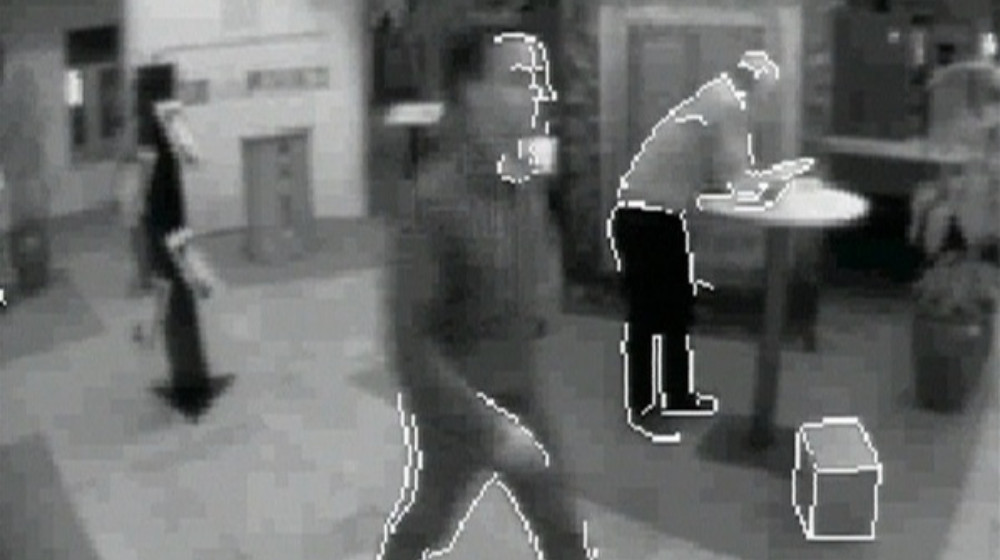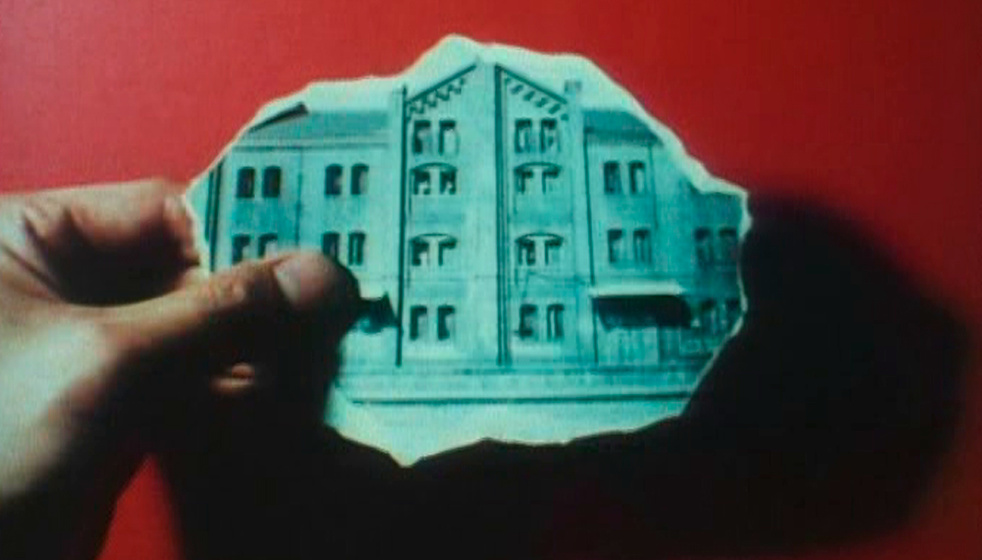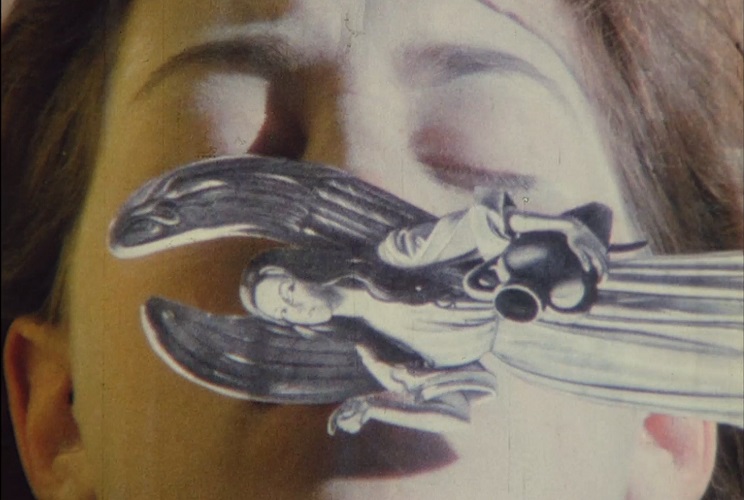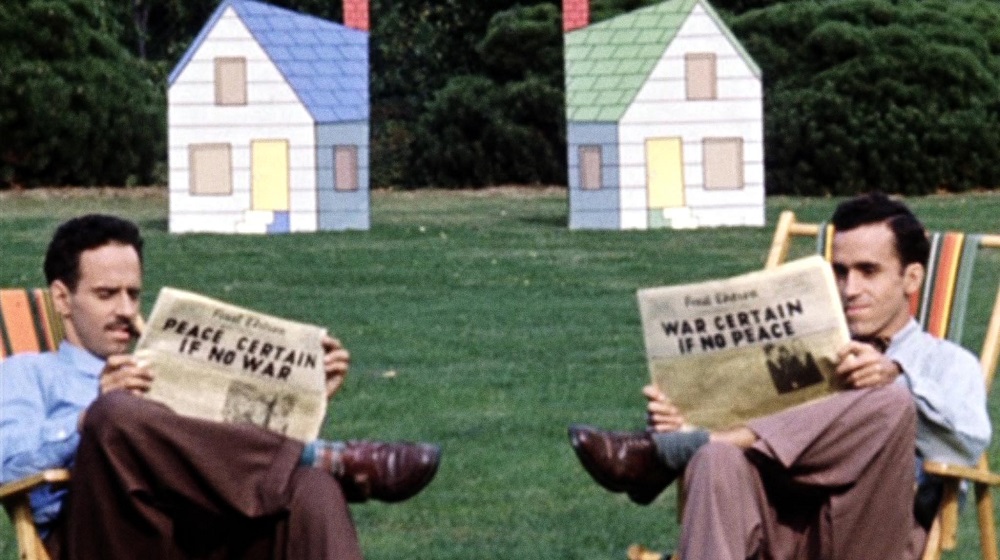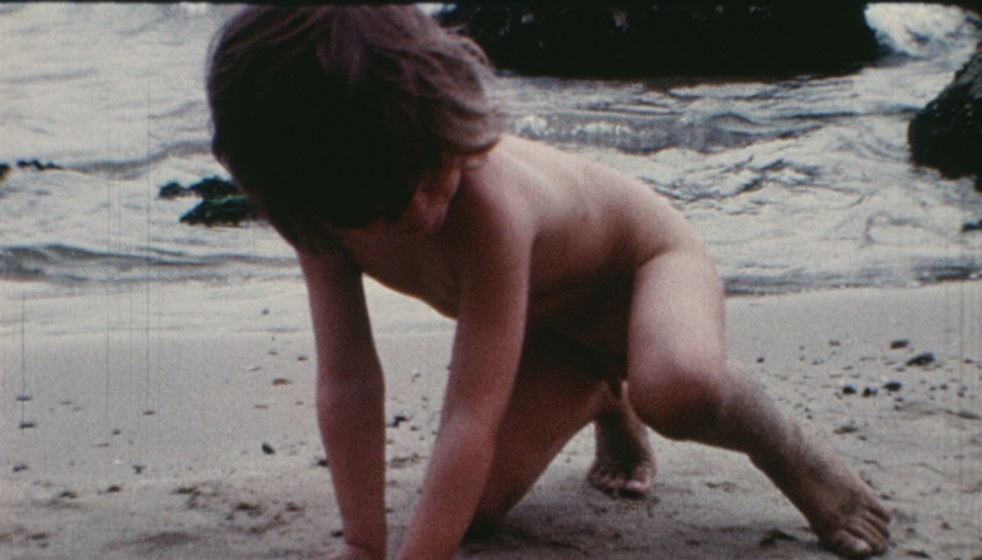La Chambre, Chantal Akerman, 1972, 11'
Placed in the centre of the image and identified with the camera, the viewer’s gaze explores the circular space of this room. It attentively reveals different elements, including the filmmaker’s own body, which are presented, repeated and changed. A 360° filmic self-portrait that comes close to the environment of virtual reality.
* Related viewing: C'est l'Aviron, Norman Mclaren, 1944, 3'.
Neighbors, Norman McLaren. 1952, 8'
Through different real-image animation techniques such as pixilation, two symmetrical neighbours fight over a flower that has grown between their plots. The simplified space, gradual progression of the altercation and the jerky, caricatured movements of the two rivals are related to the language of videogames.
She Puppet, Peggy Ahwesh, 2001, 16'
Lara Croft rebels against her mission and being a manipulatable character. Through images taken directly from the videogame and then re-edited, this character, caught between game over and try again, questions the teleology implicit in the functioning and language of videogames and reflects on identity and mortality.
Cubica, m.ash, 2002, 4'
Taking the game Snake as its starting point, an algorithm generates an animation that begins with a moving pixel that gradually gets more complex until it becomes three-dimensional. This real-time footage captures the process between the automatic and random, with an interactive version where players can choose the point of view.
* Related viewing: Mosaic, Norman Mclaren & Evelyn Lambart, 1965, 5'.
Meshes of the Afternoon, Maya Deren, 1943, 14'
The mystery of this psychological puzzle intensifies with each new round and with each repetition of the character’s journey, played by Maya Deren. At times from a subjective point of view, the audience try to solve this enigma at the same time as their many different avatars, an enigma in which objects take on a dangerous and sensual symbolic value.
Workshop Experiments in Animated Sounds, Norman McLaren, 1950-55, 5'
An exploration of the possibilities of sound created by manual intervention in the film’s soundtrack. In contrast to visual music, McLaren generates melodies of animated sound that are reminiscent of early synthetic arcade sounds and 8-bit music.
Eye/Machine, Harun Farocki, 2001, 23'
Using different types of military images produced during the Gulf War, Farocki questions the ability of the human eye to distinguish real images from artificial, fictitious images. In a reality that’s confused with the virtual, the control of images becomes a weapon.
Unsubscribe #3: Glitch Envy, Jodie Mack, 2010, 6'
The idea of glitch as an error that doesn’t affect playability and can generally be used by players to rig the game in their favour, is used by the filmmaker to creatively order colourful clippings and fragments of junk mail.
A programme by Jorge Domingo.
